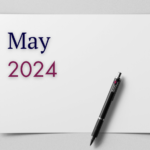|
Getting your Trinity Audio player ready...
|
– Phill Namara
Amidst this wave of start-up IPO’s, on May 31st, The RealRealInc filed to list – its mission, “to empower consignors and buyers to extend the lifecycle of luxury goods in a way that honors luxury brands.” The following article entails a deep dive of their S1 and analysis of the viability of their business model.
The RealReal Inc (NASDAQ: REAL) according to their S1, claim to be “the world’s largest online marketplace for authenticated, consigned luxury goods… revolutionizing luxury resale by providing an end-to-end service that unlocks supply from consignors and creates a trusted, curated online marketplace for buyers globally.” To cut through the verbiage, this business exists to help customers sell their luxury products through their online marketplace by physically inspecting and authenticating ALL products that are sourced from the customers. These products are either directly sourced i.e. REAL employees will travel to your house, authenticate your item and discuss with you in person your options, or they can be shipped into REAL’s authentication warehouses at their own expense.
REAL generates revenue mainly via a take-rate, a percentage of the selling price of the products that they sell via their marketplace. Historically that take-rate has hovered around 35% of Net Merchandise Value (Gross merchandise value less returns and cancellations), which compared to other online marketplaces like eBay (which has a take rate between 7-8%), suggests that REAL clearly adds significant value for both its customers and its consignors. Their value-add comes, as pointed out throughout the S1, via their authentication service, which is described as a “rigorous multi-point authentication process” – however basic calculations using information provided in their S1 causes us to question the accuracy of this claim.
According to their S1, REAL sold 1.6 million orders with an average order value of $446 over the 2018 calendar year – a mammoth number of orders to physically authenticate given they have only “100 highly trained gemologists, horologists, brand experts and art curators who collectively inspect thousands of items each day”. Based on these figures, and the overly lax assumption that REAL’s experts are working 365 days a year this means they are authenticating an average of 4,384 products a day between the 100 of them. This works out to an average of 5.5 products an hour being authenticated by each individual, assuming these brand experts work for 8 hours each day. Given that, “Each consigned item also has up to 50 unique attributes” (page 4 of their S1), we are sceptical that these brand experts only need to spend around 11 minutes authenticating each item before they go onto the platform. Further, this analysis has only taken into the account the net merchandise value, i.e. the number of products that made it onto the platform – we have completely ignored the returned or cancelled products that make up 27% of gross merchandise value.
We leave it as an exercise for our readers or listeners to determine the validity of REAL’s business model.
Phill Namara is a Research Analyst with Montaka Global Investments. To learn more about Montaka, please call +612 7202 0100.




